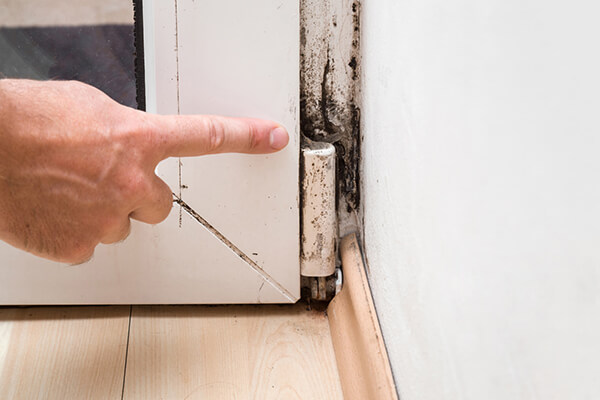Important Actions After Mold Remediation
Important Actions After Mold Remediation
Blog Article
Effective Post Mold And Mildew Removal Solutions for Your Home
Mold development in homes can be a persistent issue, commonly needing a methodical method for reliable post-remediation options. From understanding the factors that add to mold and mildew advancement to carrying out proper cleaning strategies and dampness control steps, the procedure can be intricate yet critical for keeping a healthy and balanced living atmosphere. Post Mold Remediation Report.
Comprehending Mold Development Factors
Mold development is affected by a selection of variables that are important to comprehend in order to properly attend to and avoid its spreading. Recognizing these variables is vital in carrying out successful mold and mildew removal strategies. The primary factor contributing to mold development is dampness. Mold spores call for dampness to flourish and germinate, making humid or moist settings very susceptible to mold problems. Poor air flow can also lead to moisture buildup, creating an excellent reproduction ground for mold and mildew.

In addition, airflow and light direct exposure can affect mold and mildew growth. Locations that do not have correct air flow and natural light are extra susceptible to mold and mildew growth. By attending to these elements comprehensively, individuals can successfully mitigate mold development and secure their living settings.
Proper Mold Cleansing Techniques
Utilizing efficient cleaning techniques is necessary in dealing with and preventing the reoccurrence of mold and mildew contamination in indoor environments. When handling mold and mildew, it is critical to focus on safety and security by wearing protective equipment such as safety glasses, masks, and gloves. The very first step in appropriate mold cleansing is to contain the damaged location to stop the spread of spores to unpolluted areas. This can be attained by sealing off the area and utilizing air scrubbers or adverse air machines to preserve air high quality.

Applying Moisture Control Actions
To successfully avoid mold and mildew growth and contamination in indoor environments, carrying out dampness control procedures is vital. In addition, making sure appropriate air flow in areas prone to moisture buildup, such as shower rooms and kitchen areas, can help lower the risk of mold development. By diligently carrying out these dampness control measures, house owners can properly lower the likelihood of mold recontamination and maintain a healthy and balanced indoor setting.
Using Natural Removal Solutions
After successfully implementing dampness control measures to avoid mold development in indoor environments, home owners can currently explore the effectiveness of natural remediation services in maintaining a healthy home. Natural removal solutions use eco-friendly techniques to deal with mold and mildew and mold, making them a preferred choice for those looking for non-toxic alternatives. One such solution is utilizing vinegar, an all-natural antimicrobial agent, to clean and disinfect surface areas infected by mold. Merely thin down vinegar with water and spray it onto the impacted locations, allowing it to sit for a couple of hours before wiping clean. Additionally, tea tree oil, recognized for its antifungal homes, can be combined with water and splashed onto mold-infested surface areas to hinder more development. Another natural alternative is hydrogen peroxide, which can properly kill mold on different surfaces without leaving damaging residues behind. By integrating these all-natural remediation options into their cleansing routines, home owners can successfully battle mold growth while promoting a much healthier interior setting on their own and their families.

Preserving a Mold-Free Setting
Routinely inspecting locations susceptible to mold growth, such as restrooms, basements, attic rooms, and kitchen areas, is essential. Correct air flow in locations with high humidity degrees is additionally key to avoiding mold growth.
In addition, maintaining cleanliness in the home is important for mold and mildew prevention. Maintaining interior plants in check and guaranteeing appropriate drainage in outdoor landscape design can lessen moisture build-up, minimizing the possibility of mold and mildew problems.
Conclusion
In conclusion, Post Mold Remediation Report it is vital to resolve mold and mildew growth aspects, make use of appropriate cleaning methods, apply moisture control procedures, make use of natural removal remedies, and preserve a mold-free environment in order to effectively handle article mold remediation in your house - what to do after mold remediation. By following these techniques, you can prevent mold and mildew from recurring and guarantee a healthy living atmosphere for you and your family
The primary variable contributing to mold and mildew development is dampness. Mold spores need moisture to thrive and sprout, making moist or moist environments extremely at risk to mold invasions.To properly protect against mold and mildew growth and contamination in interior settings, applying wetness control procedures is critical. Additionally, guaranteeing proper ventilation in areas vulnerable to moisture build-up, such as kitchens and bathrooms, can help minimize the danger of mold development.After successfully applying wetness control actions to protect against mold growth in interior settings, property owners can now discover the effectiveness of natural remediation services in preserving a healthy living space.
Report this page